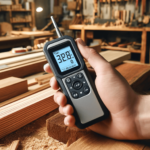
Introduction
Hand saws, versatile on-the-go cutting tools for quick, manual wood cutting, have been used for centuries. The heart of these saws is their blades, the workhorses of many projects. These blades come in various forms designed for desired cuts on different materials and the level of precision they offer. Understanding hand saw blades is crucial for achieving precision, enhanced productivity, and efficient cuts. However, this article explains different types of hand saw blades, their types, and features–whether used for DIY projects or professional woodworking.
Understanding Hand Saw Blades: Exploring Their Significance
Hand saw blades are thin, toothed metal strips with cutting edges designed to slice through various materials. Moreover, these blades securely fit multiple models of hand saws to achieve clean, accurate cuts from softwoods and metals to hardwoods and plastic, ensuring optimal performance in different applications. These tools come in various tooth sizes, shapes, and types, each designed for specific task materials.
The significance of a hand saw blade lies in its sharp teeth and durability, which translate to the precision and efficiency of tasks at hand, ensuring the quality of the work. High-quality blades ensure smooth cuts that minimise the need for additional finishing and reduce the frequency of replacement and maintenance. Additionally, the quality of a hand saw blade ultimately enhances productivity with minimal user effort.
What are the Different Types of Hand Saw Blades?
They are classified into various types based on their cutting features and intended applications. Some common types of hand saw blades include:
- Crosscut Saw Blades – As the name suggests, crosscut saw blades are well-designed to cut across the grain of wood. These blades have sharpened, angled teeth to make clean cuts without tearing the wood fibers. Crosscut blades are ideal for tasks that require smooth finishes, such as cutting lumber to length.
- Rip Saw Blades – Rip saw blades have few teeth per inch (TPI) and are engineered to cut along the grain of the wood. These blades remove wood efficiently and are perfect for tasks that involve splitting wood into narrower pieces.
- Hacksaw Blades – Hacksaw blades are made from high-carbon steel specifically designed for cutting metal and plastic. Furthermore, they have fine, hardened teeth to handle tough materials.
- Backsaw Blades – Backsaw blades are known for their reinforced back, which provides extra stability and control and prevents the blade from bending. They are used for fine woodworking tasks, such as joinery and cabinetry for detailed, straight cuts.
- Dovetail Saw Blades – Dovetail saw blades are specialised blades for making dovetail joints, which are a hallmark of quality craftsmanship. These blades have fine teeth and a narrow kerf, allowing precise, clean cuts necessary for fitting dovetail joints.
- Japanese Saw Blades – Japanese saw blades, or pull saws, are unique in that they cut on the pull stroke instead of push stroke. This design allows greater control and precision, making them popular for fine woodworking tasks that require delicate and accurate cuts.
Hand Saw Blades vs. Power Saw Blades: A Brief Comparison Analysis
While hand saw blades offer precision and control, power saw blades like circular saw blades, and reciprocating saw blades provide speed and efficiency for larger projects. Hand saw blades allow greater control, are lightweight, safe, and do not need power sources, making them ideal for on-site work. In contrast, circular and reciprocating saw blades use electric or gas-powered motors for cutting and require caution and proper safety equipment due to high speeds.
Selecting the Right Hand Saw Blade for Your Needs
Choosing the appropriate hand saw blade is crucial for achieving optimal results. Whether working on DIY projects or professional tasks, consider the following selection parameters:
- Blade Specifications (TPI; high, medium, or low TPI)
- Tooth Configuration (Rip Cut, Cross Cut, Combination, etc)
- Blade Material
- Type of Materials to Cut (Intended Use)
- Blade Length
- Handle Comfort
- Blade Shape
- Price
- Brand Reputation.
Use Cases of Hand Saw Blades in DIY and Professional Projects
Hand saw blades are versatile tools that cater to a broad spectrum of applications in both DIY and professional contexts.
DIY Applications
In DIY applications, they are used for:
- Woodworking Projects: In DIY projects, hand saw blades are used to cut lumber for shelves, frames, or furniture.
- Home Repairs: These blades can fix damaged wooden components like window frames, doors, or fences.
- Gardening: In gardening, they are ideal for pruning trees and shrubs, cutting branches, or building wooden garden structures.
- General Construction: hand saw blades offer basic framing and cutting of wood for small-scale projects.
Professional Uses
In professional applications, hand saw blades are indispensable for:
- Carpentry: Precision cutting of wood for cabinetry, joinery, and mouldings.
- Construction: Rough cutting of lumber for framing and building structures.
- Roofing: Cutting shingles and wooden components for roof repairs or installations.
- Demolition: Dismantling wooden structures in a controlled manner.
- Landscaping: Cutting trees, shrubs, and other vegetation for landscape design.
Bottom Lines
Hand saw blades are versatile tools essential for both DIY enthusiasts and professional woodworkers. Understanding their different types, selection parameters, and myriad applications can significantly enhance your projects and take your woodworking skills to the next level. With the proper knowledge and appropriate tools, you can confidently make an informed decision and achieve professional-quality results.





















